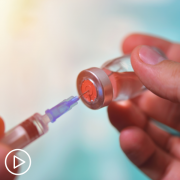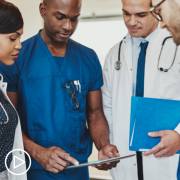Expert Advice for Newly Diagnosed DLBCL Patients
Expert Advice for Newly Diagnosed DLBCL Patients from Patient Empowerment Network on Vimeo.
Dr. Jean Koff shares key advice and important steps for newly diagnosed diffuse large B-cell lymphoma (DLBCL) patients to take to optimize their care and explains how seeing a DLBCL specialist can make a difference.
Dr. Jean Koff is an Assistant Professor in the Department of Hematology and Oncology at Winship Cancer Institute at Emory University. Learn more about Dr. Koff, here.
See More From The Pro-Active DLBCL Patient Toolkit
Related Programs:

|

|

|
Transcript:
Katherine Banwell:
What three key pieces of advice would you have for a patient who has just been diagnosed with DLBCL?
Dr. Koff:
So, my three key pieces of advice are ones that I would give to almost any patient with a blood cancer. The first is to make sure that you get a referral as soon as possible to a lymphoma specialist. The second is to bring a family member or multiple family members if you can to any appointment where you’re meeting with your cancer doctors.
And the third is to make sure that you make a list of questions that you want to ensure that you have answered for yourself before you go into these visits with your cancer providers. Because a diagnosis like this can often be overwhelming and there can be a lot of information that is given at the visit. And you want to make sure that when you’re at that visit, you have the questions that are important to you answered. A good way to do that is to make sure you have notes you can refer to, to make sure all of your questions getting answered.
Katherine Banwell:
Why is it important for a patient to see a DLBCL specialist?
Dr. Koff:
Well, something that’s very exciting about DLBCL is that the field is changing rapidly in terms of what treatments are available and what treatments are recommended. And a cancer doctor who is not only responsible for seeing lymphoma patients, but also has to keep up to date with all the other cancers that they see, including solid tumors.
It’s often very hard for them to really stay abreast of all these changes in the rapidly changing field. So, a lymphoma specialist is going to be up to date on the current recommended practices for DLBCL.
And they can also be better equipped to make very specific recommendations for workup and for treatment approach for your particular case, taking into consideration all of those nuances that we talked about earlier that may apply to a treatment in DLBCL. And then, lastly, those lymphoma specialists often have access to either specialized treatments that are only available at certain centers or clinical trials of new treatments that are not available anywhere where the clinical trial is not being conducted.




